My relationship with the Pentax ME Super has been quite short. I initially thought it might just about supplant the MX, but after finding it increasingly frustrating throughout only shooting a roll and a half of film, I’ve decided I have no intention of shooting it again.
After coming to this conclusion, I thought I should write a little review before sending it on its way to someone who I am sure will enjoy it as much as it deserves to be enjoyed. Don’t get me wrong though, this isn’t supposed to be one of those contrarian articles slamming a popular camera. As much as I quite enjoy those articles, I couldn’t bring myself to write one about a camera as nice as the Pentax ME Super. In fact, on paper at least, this camera seemed like everything I could ever need from a manual focus autoexposure Pentax SLR…
Unfortunately, in shooting it, not only have I found myself put off it, but it has actually put the final nail in the coffin of any ideas I had about buying a Pentax LX too. The issue is, neither of these cameras have an exposure lock feature, and for the way I shoot AE cameras, exposure lock is just something I can’t live without. I do realise that I am the exception rather than the rule here though, and so before I get into that personal bugbear, I do want to touch on a bunch of the things I like about the Pentax ME Super.
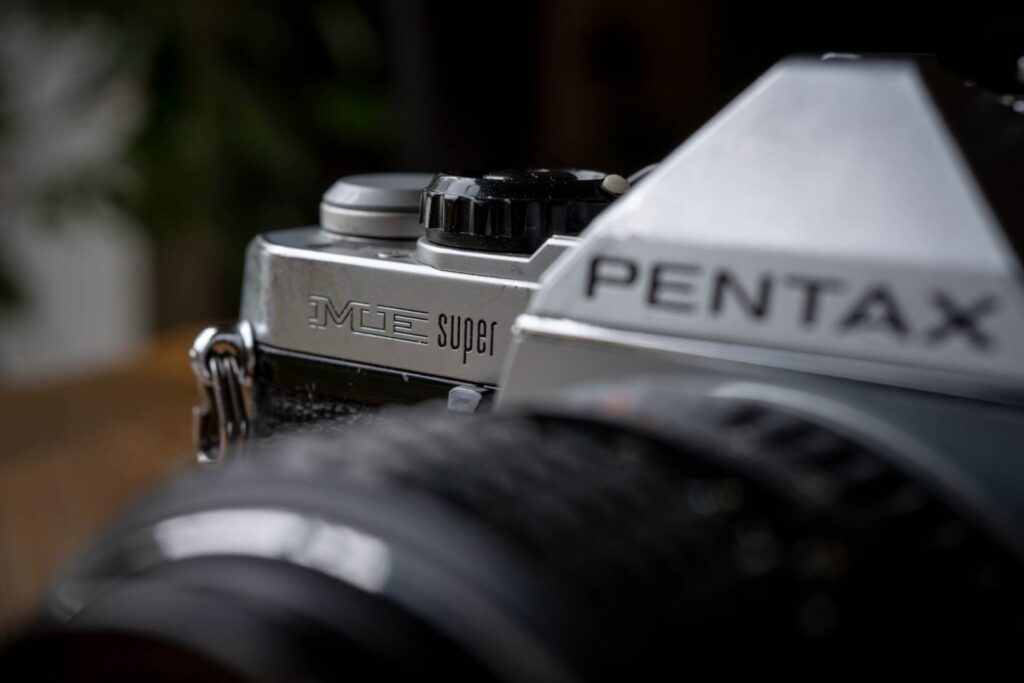
Pentax ME Super Review
I’ve long liked the look of the Pentax ME Super. Back in 2005 in the very early days of working in a camera shop, there was one on the shelf. It was there when I started working at the shop, and of all the kit in what had become an increasingly unloved second hand film camera cabinet, it was the camera that most caught my eye.
I was a Nikon man back then though, and rather than buying it with my first wages, I picked up a Nikon 70-300 lens that was on the shelf for a similar amount of money. But the Pentax ME super became one of the cameras that I tinkered with the most. It had a battery grip that made it look really cool, but without the grip it had the advantage of being really quite small.
This small size is something I really appreciate now too. It is slightly smaller than the Pentax MX, or at least it’s slightly narrower whilst also being ever so slightly taller. Neither dimensional difference amounts to much, and in the hand you wouldn’t really notice, but proportionally speaking it looks more right than the MX somehow, which I think looks a little wide/squat.
Whilst making comparisons to the MX, it’s fair to say that viewfinder is nearly as impressive too. The MX viewfinder is stunning, so anything that’s “nearly as impressive” has to be a good thing. The Pentax ME Super viewfinder has a slightly lower magnification of .95x compared to the .97x of the MX. In practice, both seem very big and bright, and my success rate with the ME Super didn’t seem to suffer by comparison.
Though they are both from the same era of Pentax M series SLRs, that’s about where the comparisons end. Where the MX is a fully manual and mechanical SLR that works with or without batteries, the ME Super is all but entirely battery reliant. I say “all but”, because it will fire without batteries, but only at the 1/125th flash sync speed and bulb.
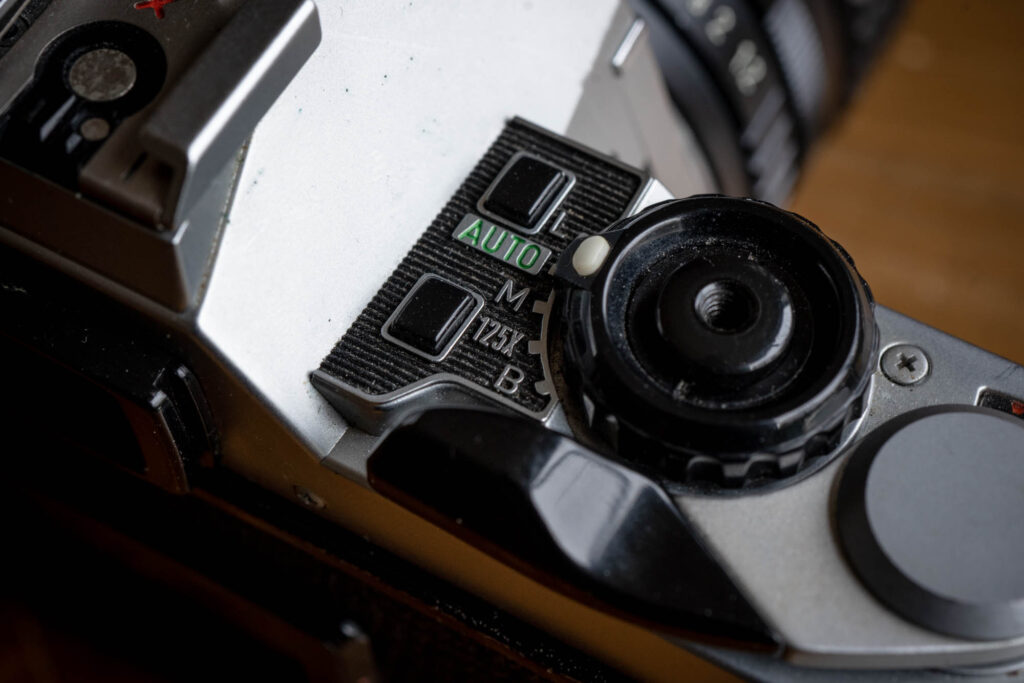
It also doesn’t have a traditional shutter dial. Instead it is controlled by a switch around the shutter button that selects the mode, and a couple of little buttons. The modes are ‘L’ for lock, ‘AUTO’ for aperture priority AE, ‘M’ for manual, 125X for flash sync and ‘B’ for bulb. The 125X mode doesn’t need to be set for that speed to be shot if the batteries die, it just works at that speed.
The modes are all fairly self explanatory otherwise. When in auto mode the shutter speed indicator in the viewfinder shows you the speed the camera will shoot at. In the manual mode, the two little buttons select the shutter speeds with indicators in the viewfinder telling you if your chosen speed is going to over or underexpose – when neither is lit, you have correct exposure.
The Pentax literature claims these buttons to solve the “fumbling nature” of the dials of the day. Perhaps the person who wrote the literature had otherwise been using a Pentax MX with its difficult to turn shutter dial…? For my money, I prefer a dial, but really the Pentax ME Super system works fairly well. As history would prove though, dials and wheels are a lot more favourable than little buttons for changing shutter speed.
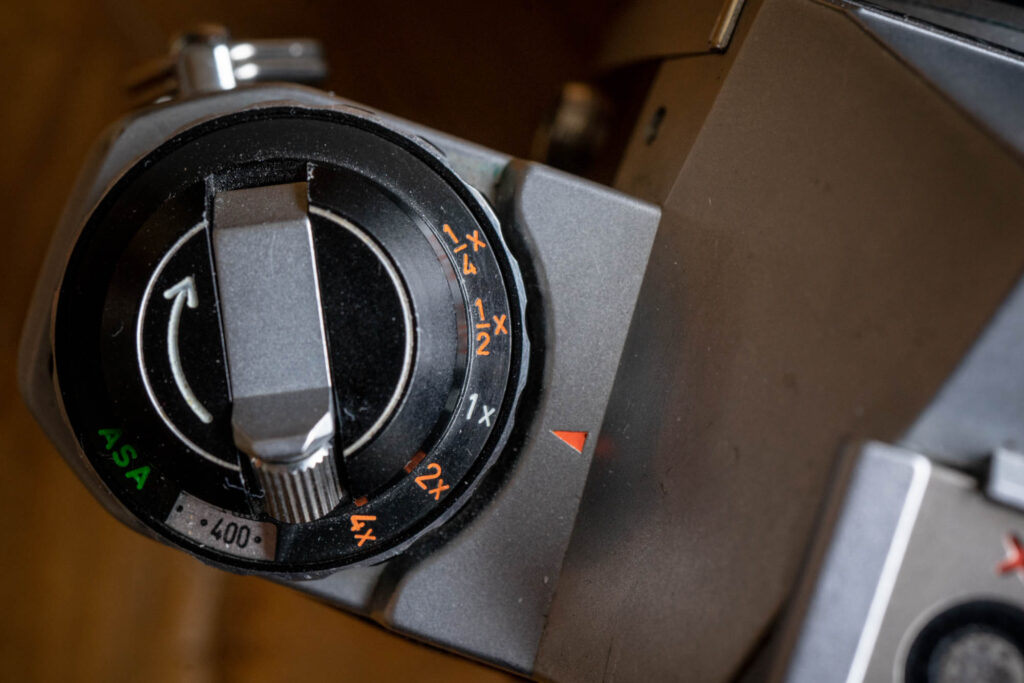
On the other shoulder of the camera is the combined exposure compensation and exposure index selection dial. Lift and rotate for speeds between 12 and 1600 ISO. And just rotate for -/+ 2 EV exposure compensation. Apart from a self timer on the front, that’s about your lot. Which was, of course, a big part of my attraction to it. It might be button-controlled, but regardless, it’s still a very simple camera with few features. In fact, it’s simplistic nature also points to the other thing that attracted me to it – that being how it works as an aperture priority camera.
In aperture priority mode with lenses that have a “diaphragm coupling lever”, it allows open lens metering. That is to say, you set the aperture on the lens, but the lens doesn’t stop down, instead the lever in the lens tells the camera what aperture it’s set to so as to give you a meter reading. The lens then stops down at the moment the shutter is fired. Nothing unusual for an SLR of this era.
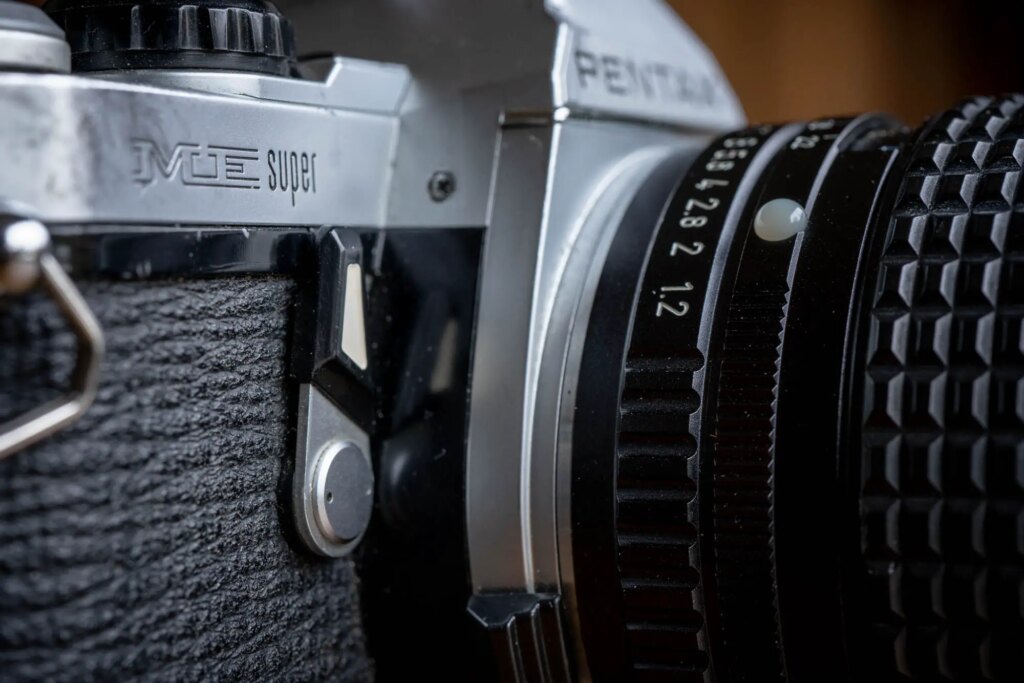
Manual Stop Down Lens Compatibility
But, as well as working like this, the aperture priority mode still works when using older M42 screw mount lenses with an adapter or lenses like the Meyer 100mm Trioplan and Lydith I have recently been playing with. Unfortunately, only manual stop down or lenses with a manual stop down switch can be used, and they can only be used in manual stop down mode. In simple terms, with a manually stopping down lens attached, when you adjust the aperture and the view through the finder gets darker, the meter in the camera responds accordingly and therefore the camera will automatically shoot at an appropriate shutter speed.
The Missing Piece of the Puzzle
Unfortunately whilst all this sounds great, there is one thing missing for the way I like to shoot auto exposure cameras. The aforementioned lack of auto exposure lock will not be the end of the world for a lot of people, but for me – especially for the way the Pentax ME Super is otherwise designed – it just doesn’t work.
In my world, the big benefit of auto exposure is how much it speeds up the process of metering. But, for it to work for me, I need to have the means to quickly override it. In simple terms, if not happy with the reading a camera is giving, either because of a backlit scene, or something in the scene is throwing the meter out – or even if my gut instinct just goes against what the camera is saying – I like to point the camera at something that gives me a reading that feels more right, lock it in, reframe and then shoot. Some people would say this only works with spot metered cameras, but I get good results using cameras with a centre weighted meter too.
The alternative is to switch the camera back to manual or use exposure compensation. Unfortunately the option to switch to manual exposure is just a little too fiddly on the Pentax ME Super. There’s a little white button on the dial that has to be pressed for it to be switched out of the auto mode which I repeatedly found difficult to do. I was happy shooting it in manual mode, but switching between manual and auto just felt too fiddly. I must admit, I could probably make the exposure compensation option work. The dial is a little difficult to turn, especially with cold hands, but it would probably be at least a bit easier in the warmer months.
The Moment of Downfall
The issue is though, this just isn’t how I like to shoot with film cameras. Auto exposure lock is just my preference, and so using the Pentax ME Super, it just felt like the camera wasn’t designed to suit my way of shooting. And I realised this almost as soon as I started using it. The first time I used it in anger was when testing the Meyer 100mm. The narrow field of view meant I didn’t suffer the issue too much, but there were a couple of shots that were heavily backlit that I had to switch the camera to manual for.

The problem became even more clear when finishing the roll shooting with a 20mm Pentax-M lens. With such a wide field of view, even with the few shots I took, I found the centre of the frame – and therefore the area the camera was metering from – was pointing at the sky and thus throwing the exposure out. Again, I overcame this by switching to manual, but it felt far to clunky having to do so.

Then, the straw that broke the camel’s back was trying to shoot it with the 35mm Lidyth I have on loan from Meyer. I found the camera was choosing all sorts of weird and wonderful shutter speeds in auto mode, so I decided to shoot it on manual mode. And by the time I was shooting The Pentax ME Super on manual mode, I just wished I was using the Pentax MX (with its stiff dial) instead.
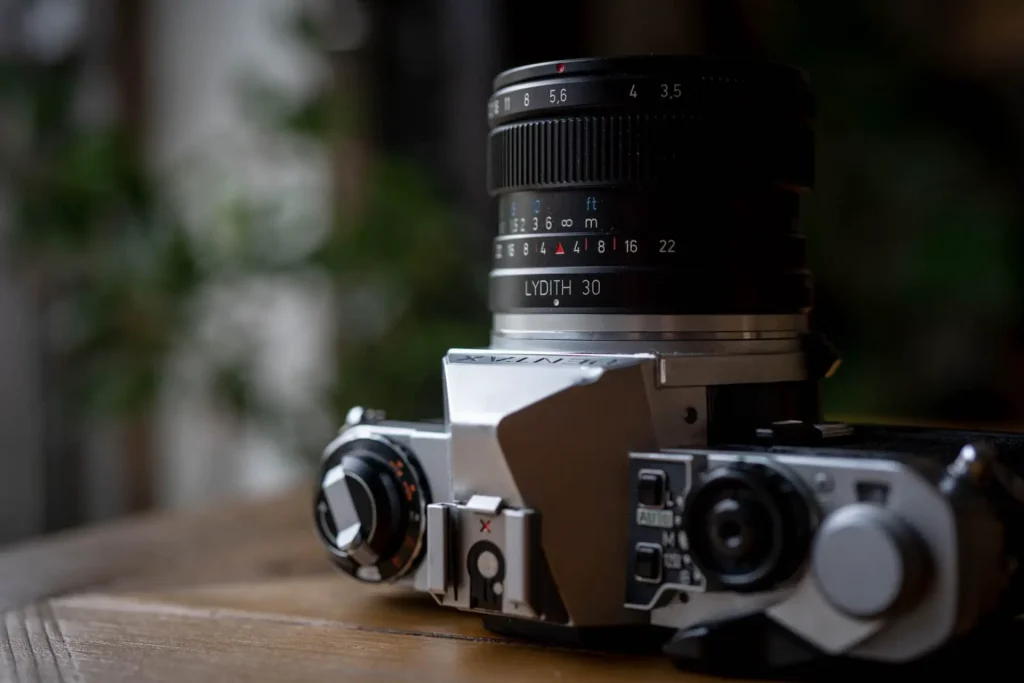
Walking around the woods when this happened, I actually gave up trying to use the Meyer 35mm lens altogether and put the 50mm f/1.2 lens on the camera to shoot that instead. The funny thing was, that negative experience with the Meyer lens crept into my psyche when shooting with the 50mm too. I wanted to take a photo of some trees that were heavily backlit. Having moments before set the Pentax ME Super back to auto, I had to fiddle with the tiny white button to switch to manual, faff about getting a meter reading I was happy with… … half way through doing this, I gave up. I was done. I didn’t even take the photo, the camera died to me in that moment. When I got home, I unloaded the film half way through and loaded it into the MX.
Photos

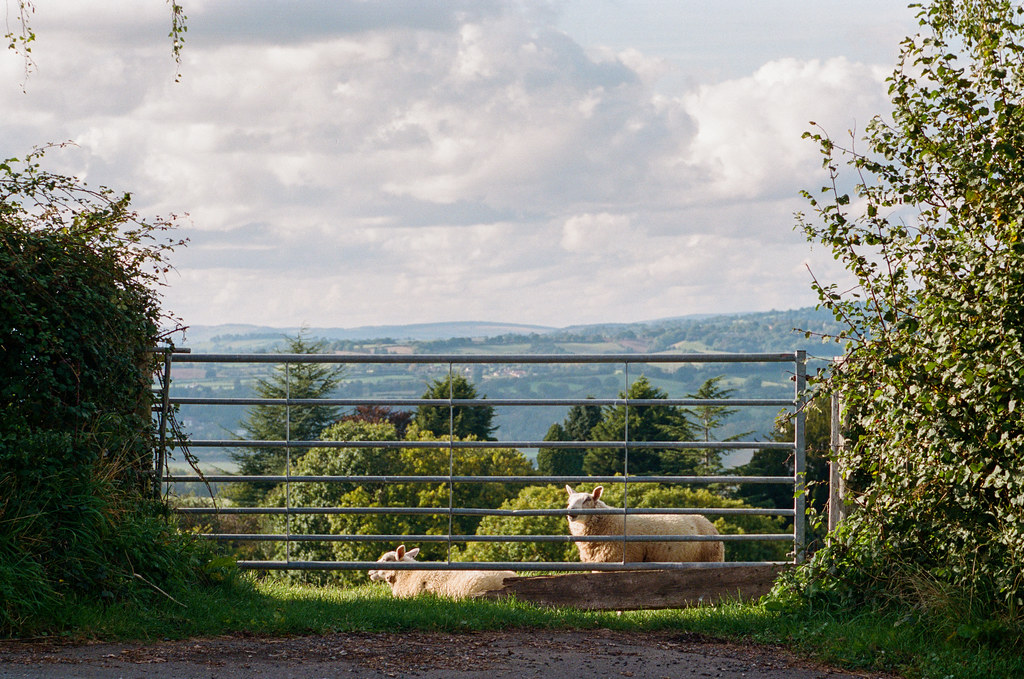
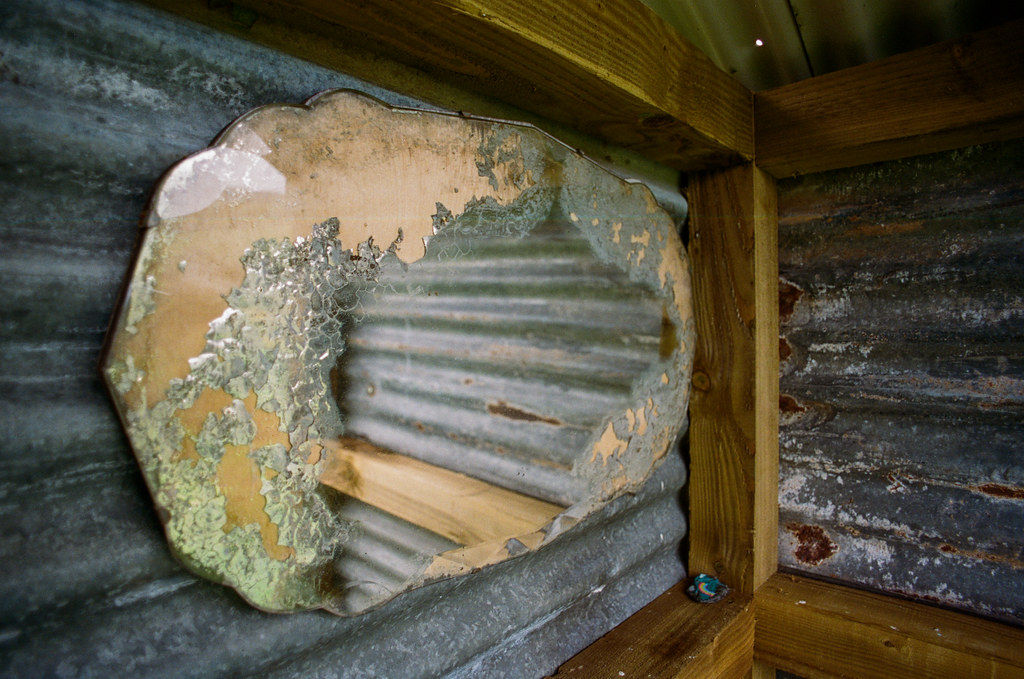
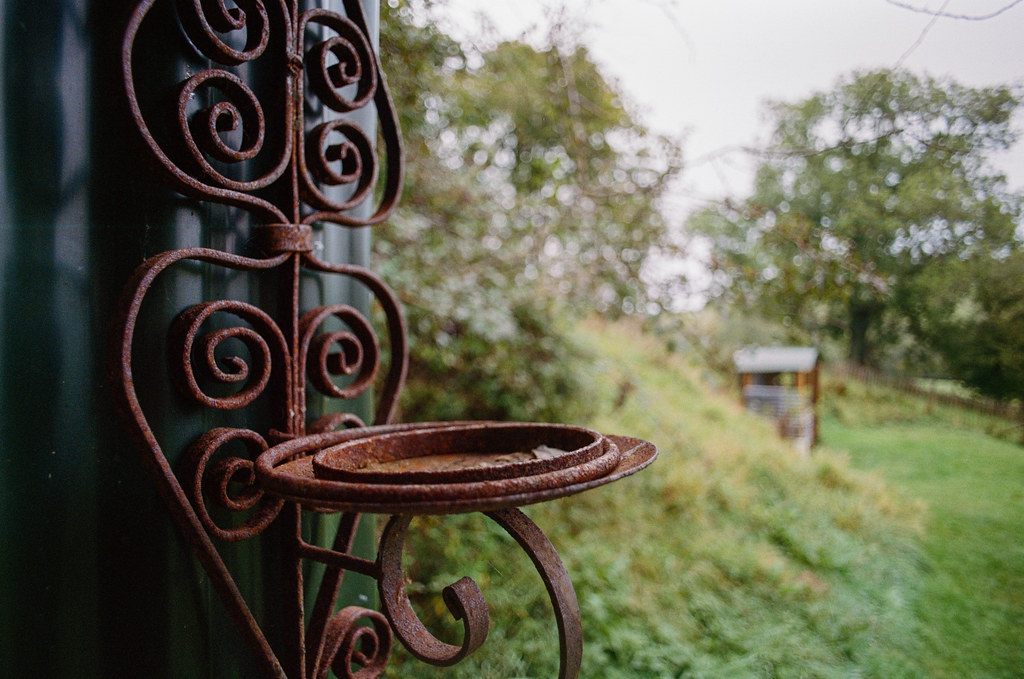
Pentax ME Super – Final Thoughts
None of the things I like about the Pentax ME Super make it right for me as a camera. I was hugely optimistic before I started shooting it, but I totally failed in that optimism to account for the fact that I just don’t get on with auto exposure cameras that don’t have some sort of exposure lock.
Of course this doesn’t make the Pentax ME Super a bad camera. I’m almost disappointed in myself for not getting on better with it – especially having been so besotted with it all those years ago when I worked at the shop. It is what it is though. There’s a stack of other cameras out there that could offer me what I want from an AE camera, so why struggle with this one?! The answer is of course not to struggle. As I said at the beginning of the article, I shall move it on to someone who doesn’t shoot like me and revert to the MX.
Ultimately, taking my personal preferences out of the equation, this camera has a great deal going for it. If you can get past the battery reliance and the slightly unconventional controls, it’s a small (tiny) solid feeling SLR with a really quite awesome viewfinder that works in aperture priority with basically any Pentax K or M42 lens. How much the value of the Pentax ME Super has been going up in recent years is testament to these facts!
Share this post:
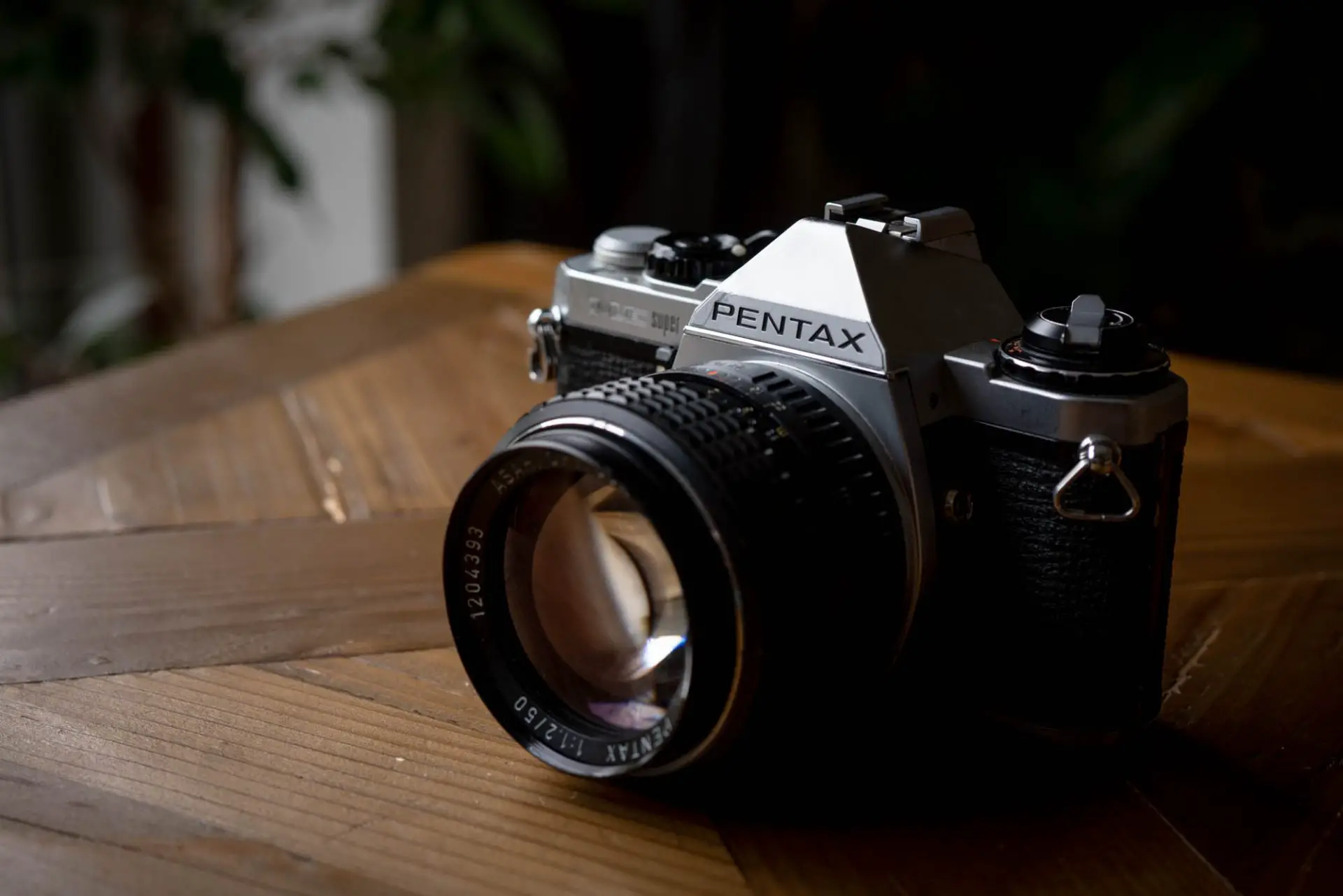








Comments
Aivaras on Pentax ME Super Review – Not for me, but a Great Camera Regardless
Comment posted: 11/01/2021
As for expo lock - look at K2 and especially K2 DMD models. These are the ones with traditional dial AND exposure lock. Plus those have an ability to show aperture in finder.
If only Pentax would make MZ-3 from metal instead of plastic with the same quality level , in terms of control ergonomics that would be near perfect small SLR...
Comment posted: 11/01/2021
Comment posted: 11/01/2021
Comment posted: 11/01/2021
Comment posted: 11/01/2021
Alexei on Pentax ME Super Review – Not for me, but a Great Camera Regardless
Comment posted: 11/01/2021
Helge on Pentax ME Super Review – Not for me, but a Great Camera Regardless
Comment posted: 11/01/2021
With AE implemented it’s almost unforgivable to not have it.
It’s irritating on ME and Nikon EM too, but because they are so simple and cheap, you somehow forgive it. Maybe also because there is only one option for compensation: The ISO dials.
Not a whole different mode and switches that has to be flipped and set.
The “Super” moniker somehow makes you expect at least such a simple feature.
Comment posted: 11/01/2021
Graham Coad on Pentax ME Super Review – Not for me, but a Great Camera Regardless
Comment posted: 11/01/2021
I only ever had an original ME fully auto, as a 'pair' with a MX and was perfectly happy with the exposure compensation dial..
I suspect many users never switched out of Auto.
PS once I had used cameras with an exposure lock I realised what a great feature it was, but I still like using a ME for 'old times sake'.
Comment posted: 11/01/2021
Comment posted: 11/01/2021
Dean Linney on Pentax ME Super Review – Not for me, but a Great Camera Regardless
Comment posted: 11/01/2021
Comment posted: 11/01/2021
Comment posted: 11/01/2021
Comment posted: 11/01/2021
Davide on Pentax ME Super Review – Not for me, but a Great Camera Regardless
Comment posted: 11/01/2021
btw love your reviews!
Comment posted: 11/01/2021
Simon on Pentax ME Super Review – Not for me, but a Great Camera Regardless
Comment posted: 11/01/2021
I also have an LX - which I would basically sum up as being an AEL button short of perfection. It's not too bad to change to manual, and has a nice dial when you do, but the exposure compensation dial has an annoying lock at 0. I just about manage to convince myself it's ok, but it still bothers me sometimes. It's such a lovely thing apart from the lack of AEL though - the build quality and feel in the hand (particularly with the grip) is totally different to the ME etc. It's a comfortable second to my M4-P as my most fondleable (if that's a word) camera - you should definitely still get one!
Comment posted: 11/01/2021
Comment posted: 11/01/2021
Comment posted: 11/01/2021
Walt21012 on Pentax ME Super Review – Not for me, but a Great Camera Regardless
Comment posted: 11/01/2021
Comment posted: 11/01/2021
Alexander Seidler on Pentax ME Super Review – Not for me, but a Great Camera Regardless
Comment posted: 11/01/2021
In my experience the olympus is the champion of metering.
Maybe it was out of tune ?
Comment posted: 11/01/2021
Stuart Jenkins on Pentax ME Super Review – Not for me, but a Great Camera Regardless
Comment posted: 11/01/2021
The only other thing I wish it had was depth of field preview (as the MX has). Maybe I'm just wishing it would turn into an MX, but they're awfully expensive.
Comment posted: 11/01/2021
Huss on Pentax ME Super Review – Not for me, but a Great Camera Regardless
Comment posted: 12/01/2021
I find it a more useful camera because of this than my LX. The lack of AE lock in the LX is bizarre. Some people make the excuse that it was impossible for it to have AE lock as it has OTF (film plane metering). But this of course is nonsense because it gives you a meter reading before you take the pic - otherwise what is that readout you see in the VF when composing a shot? So it can AE lock on that. If it had a button to do so...
So why do I have the LX? Because I spent a cr@p tonne of money getting it working, and well, it's cool. And honestly just so nice to hold. Somehow it is the most right feeling SLR that Pentax made. And I do also have the MX, K2 etc etc to back that statement up with.
Comment posted: 12/01/2021
Comment posted: 12/01/2021
Comment posted: 12/01/2021
Michael J on Pentax ME Super Review – Not for me, but a Great Camera Regardless
Comment posted: 12/01/2021
Perhaps the reason I'm not bothered by the exposure lock thing is that I started using the ME Super before I had any notion of such a thing. I've used them since 3rd year of architecture school, which was, er... 1993 and I bought one because they were cheap, and were cheap to replace if you killed it. Some of the other students had amazing cameras- an inherited Praktica, or daddy's spare Olympus and there was a girl who had been a professional photographer who had a dazzling Nikon setup and whose work looked outrageously good.
Comment posted: 12/01/2021
Comment posted: 12/01/2021
Comment posted: 12/01/2021
Comment posted: 12/01/2021
davesurrey on Pentax ME Super Review – Not for me, but a Great Camera Regardless
Comment posted: 12/01/2021
It just goes to show how far we have come now with our AE, AF, Auto-everything cameras. Having just read through nearly 300 pages of the Sony RX100 vii user manual (with such “features” as how to choose which eye the eye-focussing will track) I am definitely tilting towards a KISH, Keep It Simple Hamish, viewpoint.
Comment posted: 12/01/2021
D Cho on Pentax ME Super Review – Not for me, but a Great Camera Regardless
Comment posted: 12/03/2021
My Nikon FM3a and FE2 both have AE lock features and I tend to use them because the AE compensation dials on these cameras requires one to unlock them by pressing a tiny, fiddly button while turning the dial. This requires two hands and taking the camera down from one's eye.
Steve Marino on Pentax ME Super Review – Not for me, but a Great Camera Regardless
Comment posted: 04/03/2022
Maybe you won't need to use it often, but the first time you lose the shot or have it improperly exposed due to this oversight should be your last. Sell it and get a real camera. One where you make the decisions, not it. Your photos will thank you.
JC on Pentax ME Super Review – Not for me, but a Great Camera Regardless
Comment posted: 20/01/2024
Two weeks ago i loaded a Fomapan 400 in my ME super. I use it with SMC-M 28mmf2.8 ( a real pancace ), SMC-M 50mmf1.4 ( lovely even at f1.4 ) and a new to me SMC-K 135mmf3.5 ( or a SMC-K 45-125mmf4 instead ). For macro work and for 40mm shots i use the excellent SMC-A 35-70f4.
Yes, she doesn't have an AE-lock-button , but i use at each second or third shot the +/- correction-wheel on the left side, this is a very quick movement.
In the viewfinder the camera reminds me with a red light to turn it off again.
For my opinion there are two main advantages with the ME or the ME super :
1.) They are so small. Sometimes i put it in my exterior pocket in my rain coat. The difference between a rangefinder camera ( with interchangeable lenses ) isn't that notable.
2.) The viewfinder is very large and bright.
And it's a SLR viewfinder !
Jonathan Rickell on Pentax ME Super Review – Not for me, but a Great Camera Regardless
Comment posted: 19/10/2024
In an era where children of the 2020's are unlikely to grow up with images of their grandparents, or even childhood (because digital will see to it that many images don't make it to a curated format), I give away CLA'd Pentax ME Super cameras to friends and family. Yes it lacks AE lock and an easy-to-manipulate manual settings, but used as a point and shoot by non-enthusiast users I wager they will get more keepers than with many other alternatives. Buy 'em, give 'em away and spread the love.
Marc Gordon on Pentax ME Super Review – Not for me, but a Great Camera Regardless
Comment posted: 27/08/2025
My first impressions are mixed. The camera has a plastic feel to it alongside a minimalist dial with little utility. I own several other Pentax cameras including the LX, MX, KM, K1000 and some other manual M42 cameras. If the ME Super provides decent shots I will hold onto it. If I do not like it, I will sell it to fund the CLA for the MX.